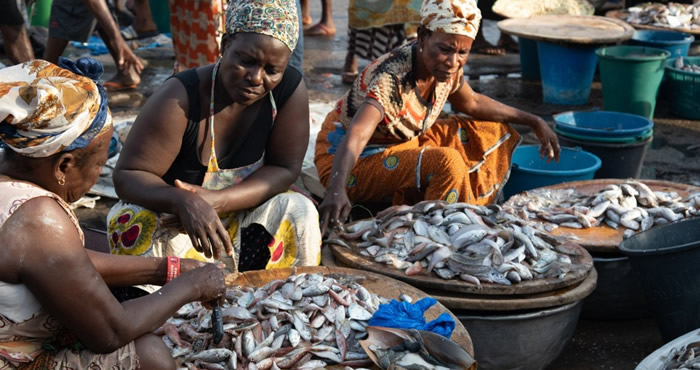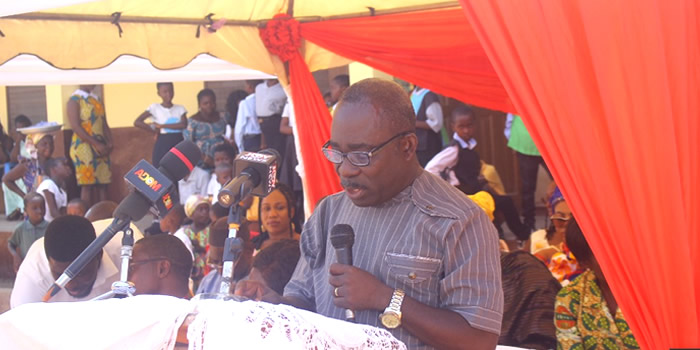

Demographic Characteristics 1.3.2.1 Population size and Distribution The following gives a summary of the population of the Metropolis according to the 2010 National Population and housing census. By 2010 Population & Housing census, the population of the Metropolis is 169,894.
? Male – 82,810 (48.7%)
? Female – 87,084 (51.3%)
? Urban Population – 77%
? Rural Population – 23%
? Population Density – 1,573 persons/km2
The population of the Cape Coast Metropolis was 54,123 in 1960 and 69,495 in 1970, giving an inter-censual increase of 28.40%. In 1984 and 2000 the population increased again to 84,477 and 118,106 respectively, indicating a substantial increase of 39.8% for the 14-year period. The population grew at a rate of 2.2% between 1960 and 1970, dropped sharply to 1.3% between 1970 and 1984 and then rose to 2.0% between 1984 and 2000. The 2010 population census indicates that Cape Coast Municipality has a total population of 169,894 including 93,619 females (51.26%) and 89,017 (48.74%).
Cape Coast core area with its 82,291 inhabitants has a disproportionate share of the Metropolis in terms of both landmass and population. The town has expanded since 1984 when it returned a population of 65,763 compared with 56,601 in 1970. The expansion has virtually engulfed certain communities like Pedu, Abura, Nkanfoa, Esuekyir, Ebubonko and Ankaful, among others, previously satellite villages that are now almost part of the urbanised area. If the current rate of development of infrastructure continues the whole Cape Coast Metropolis would very soon become one compact community. The urban population is 76.7% which the rural is just about 23.3%. This rural population is becoming more or less marginalized in terms of development. The whole Metropolis is gradually being constrained by availability of land for socio-economic development, especially farming and related activities. The situation is worse in core Cape Coast because of its hilly and undulating topography.
Table 3: Demographic Characteristics
Age-sex distribution
The male/female ratio is 94.4:100. In 1984, there were 42,855 males as against 42,583 females in the Metropolis, giving a sex ratio of 100 males to 101 females at the time. In 2000 the figures were 57367 males and 60741 females. Although the larger female population reflects the national pattern, the phenomenon in the Metropolis may be attributed firstly, to a higher male out-migration rate; and secondly, to the rapidly urbanising nature of the area which encourages economically active females to stay back and engage in small-scale economic activities.
The population pyramid indicates that the Metropolis is largely characterised by a youthful population with the under 20-year-olds accounting for some 46.6% of the total population. Females fairly out-number males in each age-cohort. The ageing cohort (ie.65+) is relatively normal with a tapering of the pyramid at the top, signifying a general bell-shaped pyramid characteristic of developing areas. The nature of the population requires that the Assembly undertake programmes and projects which are youth-centred. However, this does not preclude the provision of programmes for the aged such as social security, pension and welfare schemes.
Population Distribution
The population size and distribution of the Cape Coast Metropolis is presented in Table 2.1 which indicates that the Metropolis has a total population of 169,894 consisting of 82,810 males (48.7%) and 87,084 females (51.3%). The Metropolis is predominantly urban with three quarters (130,348) of the population residing in urban areas compared to 39,546 (23.3%) in rural settlements.
Rural-urban split
The Metropolis has a peculiar rural-urban scenario. Cape Coast has been the only urban centre in the Metropolis since 1960. By 1984 the rural-urban split for the district was 32.3:67.7 as against 71.2:28.8 for the region and 63.1:36.9 for the nation. In the 2000 Population and Housing Census, the rural-urban proportions changed slightly to 30.3:69.7 for the district, 62.5:37.5 for the Region and 56.2:43.8 for the country. That is, 23% (Rural) and 77% (Urban). It therefore means that the Metropolis is more urbanised than the region and the nation respectively and, as such, any development plan ought to take this into consideration when formulating activities to address problems.
Table 4: Rural Urban Population by Locality and sex
Source: 2010 population and Housing census report.
Date Created : 4/28/2025 4:04:34 AM













 facebook
facebook
 twitter
twitter
 Youtube
Youtube
 +233 593 831 280
+233 593 831 280 0800 430 430
0800 430 430 GPS: GE-231-4383
GPS: GE-231-4383 info@ghanadistricts.com
info@ghanadistricts.com Box GP1044, Accra, Ghana
Box GP1044, Accra, Ghana